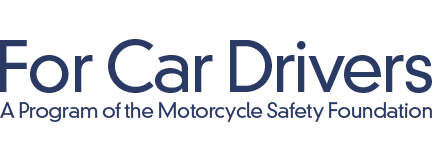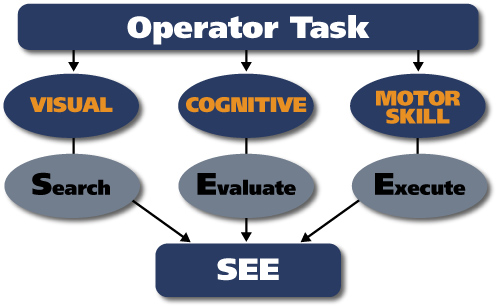The Motorcycle Safety Foundation (MSF), in its Basic RiderCourseSM (BRC) and other curricular products, promotes a three-part process with the acronym SEE (Search, Evaluate, Execute) as the core of a personal safe-riding strategy (see diagram).
Operating a motor vehicle, especially on public roads, is not a passive activity but a complex task that involves more than just knowing how to use the accelerator, brakes, and steering. Motor vehicle operators require visual, cognitive and motor skills. In the chart above, these three distinct skills are transformed into three easily understood terms: Search, Evaluate, Execute. Search means to actively scan and identify factors that could create increased risk; Evaluate means to consider potential problems arising from the interaction of those factors; and Execute refers to the physical motor skills used to prevent or avoid the resulting hazards. (Please refer to the Appendix for an in-depth review of the use of the Search, Evaluate, Execute process.) An additional benefit of the three terms is that they form an acronym – SEE – that is easy to remember and is relevant to the driving/riding task in and of itself. The SEE process is applicable not only to the operation of any type of motor vehicle, but can work equally well as a risk-management strategy for bicyclists or even pedestrians interacting within a motor vehicle environment.


